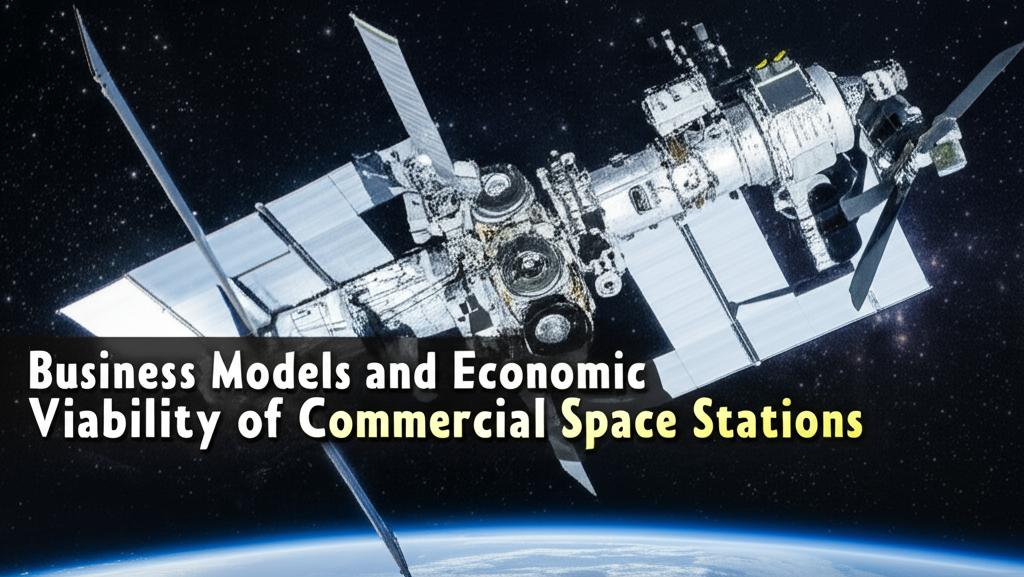The era of commercial space stations is rapidly approaching, driven by the planned retirement of the International Space Station (ISS) around 2030 and NASA's strategic shift towards becoming a customer rather than an owner-operator in low Earth orbit (LEO). This transition is fostering a new ecosystem aimed at leveraging the LEO economy for scientific research, technology development, and novel commercial ventures.
The Opportunity in Low Earth OrbitThe ISS, a monumental achievement costing over $150 billion to build and roughly $3.1 billion annually to operate, has served as a vital platform for microgravity research and international collaboration for over two decades. Its decommissioning presents both a challenge and an opportunity. NASA anticipates saving $1.5 billion to $1.8 billion annually post-ISS, funds intended to bolster deep space exploration initiatives. Commercial space stations are poised to fill the gap, providing continued access to LEO for research and potentially expanding the scope of activities.
Key applications envisioned for these private outposts include:
- Microgravity Research: Continuing and expanding studies in biology, pharmaceuticals, materials science, agriculture, and physics.
- In-Space Manufacturing: Producing high-value materials like fiber optics, unique alloys, or even bioprinted tissues that benefit from microgravity conditions.
- Technology Demonstration and Validation: Testing new space technologies and hardware in a relevant environment.
- Space Tourism: Hosting private astronauts for unique orbital experiences.
- Mission Support Services: Providing logistics, training, or staging points for other space missions.
- Other Ventures: Exploring possibilities like in-orbit data centers, entertainment, and advertising.
Several companies, often supported by NASA's Commercial Low Earth Orbit Destinations (CLD) program, are developing commercial space station concepts:
- Axiom Space: Initially contracted ($140 million) to attach modules to the ISS starting around 2026, Axiom plans for these modules to later detach and form a free-flying station. Recent plans involve launching a Payload, Power, and Thermal Module first to enable an earlier free-flying capability, potentially by 2028.
- Starlab Space: A joint venture involving Voyager Space, Airbus, and recently joined by Northrop Grumman (who merged its own CLD effort into this). Starlab received significant CLD funding (totaling $217.5 million after recent additions) and aims for a continuously crewed station focused on research and manufacturing. Lockheed Martin was previously involved but was replaced by Airbus.
- Orbital Reef (Blue Origin-led): Partnering with Sierra Space and others, this project envisions a "mixed-use business park" in space. It received CLD funding ($172 million total after additions) for design and technology development, including work on life support systems and large habitat windows.
- VAST Space: Self-funded by founder Jed McCaleb, VAST plans to launch its Haven-1 station module as early as 2025 via a SpaceX Falcon 9, with crewed missions to follow. It aims to be the first commercial station and will utilize Starlink for communications.
NASA's CLD program is critical, providing seed funding and technical support. The agency plans to allocate up to $1 billion annually for CLD services once stations are operational, acting as a crucial anchor tenant. Phase 2 of CLD, expected to begin with contract awards in 2026, will involve NASA purchasing services from certified commercial stations.
Business Models and Revenue StreamsCommercial space station operators anticipate diverse revenue streams, though the initial market relies heavily on government contracts:
- Anchor Tenancy (NASA): Providing services like astronaut accommodation, research time, and payload hosting for NASA is expected to be a primary income source initially.
- Government & Agency Contracts: Hosting astronauts and research from other national space agencies.
- Commercial Research & Development: Leasing lab space and resources to private companies (e.g., pharmaceutical, materials science) for microgravity R&D.
- In-Space Manufacturing: Offering facilities for companies aiming to produce goods in space for terrestrial or space-based use.
- Private Astronaut Missions (Tourism): Flying wealthy individuals or company-sponsored personnel for orbital stays. While often highlighted, its market size and sustainability as a core revenue driver are debated, with some projections estimating a $4-6 billion market by 2035.
- Marketing and Entertainment: Potential for advertising, media productions, or brand partnerships.
- Technology Qualification: Charging companies to test and qualify their space hardware.
Despite the excitement, significant economic hurdles remain:
- High Costs: Building and operating a space station is incredibly expensive (CAPEX and OPEX). While commercial approaches aim to be far cheaper than the ISS ($150bn+), estimates still involve multi-billion dollar investments and substantial annual operating costs.
- Market Size and Demand: There are concerns about whether the commercial demand beyond NASA will be sufficient to sustain multiple competing stations, especially in the early years. Some industry figures believe the market might only support one or two stations initially.
- Securing Funding: Attracting sufficient private capital for these long-term, high-risk ventures is challenging, especially in tighter economic climates.
- Reliance on NASA: Near-term viability heavily depends on NASA fulfilling its role as a major customer. The goal is for NASA to eventually become one of many customers, but achieving a diverse customer base will take time.
- Launch Costs and Cadence: While launch costs have decreased significantly (largely thanks to reusable rockets like SpaceX's), frequent and affordable access to orbit for crew and cargo remains essential for closing the business case.
- Competition: Potential competition exists from suborbital flight providers and other short-duration orbital missions.
The next few years are critical for the commercial space station sector. Companies like VAST and Axiom are targeting launches in the mid-2020s. Success will depend on meeting technical milestones, securing ongoing funding, and demonstrating a viable market beyond government contracts. The development of enabling technologies, like advanced communication relays, in-space assembly, and more affordable launch options, will also play a crucial role.
The transition from the government-led ISS era to a dynamic commercial LEO ecosystem represents a major shift in the space economy. While the challenges are substantial, the potential for innovation in research, manufacturing, and exploration drives the significant investments being made in these orbital platforms. Whether these ventures become bustling hubs of commerce or struggle to find sustainable footing remains a key question for the evolving space industry.

